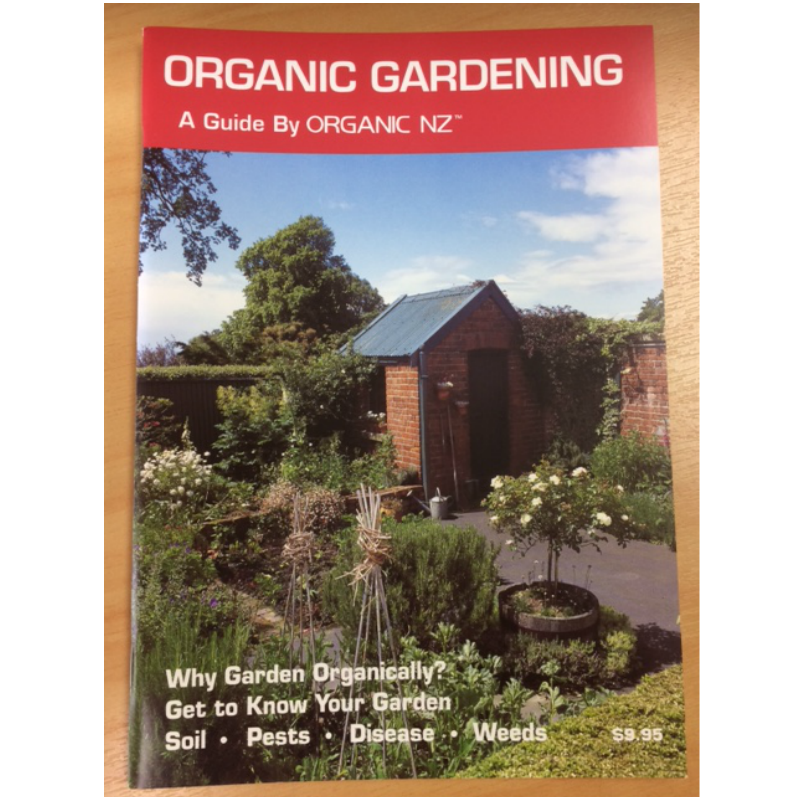
- Getting Started
- The Soil, Crop Rotation and Composting
- Plant Support
- Pests
- Disease & Weeds
- The Garden
Most gardeners panic when they see pests on plants and want to take immediate military action.
But insects, even those that eat your plants, are a crucial part of Nature’s system. So take some time to really watch what those pests do. Are they destroying the plant or just nibbling? Many plants can outgrow minor damage.
What other roles are these pests playing? They may:
- Provide food sources for other insects that pollinate your plants
- Provide food for birds
- Eat plant debris
- Prey on other pests
Prevention
If pests really are a problem there are some natural ways of dealing with them. The best defence against insect attack is prevention – everything discussed so far to create healthy plants in a benign environment. Other steps include:
- Minimise plant stress: the less stressed the plant, the greater its ability to resist pests and disease.
- If there are enough healthy plants consider “sacrificing” the more stressed ones.
- Strengthen weaker plants to resist attack – e.g. foliar sprays.
- Don’t overfeed or force feed plants. It makes them weaker and more attractive to pests.
- Use diversity grow a wide range of plants and encourage a wide range of garden life.
- Intermixing plants and crops makes them less obvious targets and if pests do arrive, the food supply is limited. Monocultures are vulnerable to attack.
- Encourage predators.
- Use barriers and traps.
- Use biological controls.
Predators
Natural predators of pest insects – beneficial insects, birds, frogs and lizards – control pests by eating them. Make your garden hospitable for these natural allies by:
- providing a water source – a dishful may be all you need
- not wiping out the entire pest population with an organic pesticide, leave some pests for predators to feed on
- growing attract plants all year-round e.g. phacelia, marigold, sweet alyssum and dill, which attract beneficial insects to feed on the nectar, or umbelliferae (e.g. Queen Anne’s lace) with large “landing pads”
- growing the above flowers in with vulnerable plants, or in island “refuges”
- providing refuges – small wilderness areas where predators can rest, feed, breed logs, stones, hiding places for spiders to spin webs, beetles to lie in wait. Organic gardens aren’t the tidiest in the neighbourhood.
Predators include:
| Ants | Feed on fruit fly, codling moth, some caterpillars etc. |
| Beetles | Rove beetles, soldier beetles, tiger beetles etc eat a range of insect pests |
| Birds | Friends as well as foes, they feed on hundreds of pests |
| Centipedes | One leg per segment, (plant-eating millipedes have many legs per segment), they eat caterpillars, slugs etc. |
| Dragonflies | Eat mosquitos and other insects, sadly including bees |
| Frogs | Need water and damp dark places, eat slugs |
| Hedgehogs | Eat slugs, millipedes etc., but also beneficial insects |
| Hoverflies | Eat aphids, scale insects, mites, young caterpillars, larvae of pear/cherry slugs |
| Lacewings | Eat aphids, scale, mealy bugs, mites, whitefly, etc. |
| Ladybirds | Eat scale, aphids, whitefly, mealy bugs etc |
| Lizards | Eat slugs, snails etc. |
| Parasitic Wasps | Ichneumons lay eggs on many pests and eat caterpillars |
| Praying Mantises | adults eat caterpillars, bugs, beetles etc., young eat aphids |
| Spiders | eat flies, mosquitoes, caterpillars, codling moth larvae, butterflies etc. |
Barriers
Keep pests away from target plants by including barriers such as:
- Sticky or greasy bands around trees to deter codling moth, ants etc.
- Bran, eggshells and other gritty barriers against slugs and snails
- “Fences” dug in 30 to 40 cm below soil level to deter burrowing pests
- Mini cloches (cut down and inverted plastic bottles) to protect young seedlings
- Netting over fruit to beat the birds.
Traps
For the pests that just have to be removed, traps include:
- Sticky traps.
- Hang up a piece of card or wood painted yellow and smeared with vaseline to attract whitefly, aphids and other flying pests.
- Yellow-flower plants like mustard act as catch crops, attracting pests which you can then remove together with the plant.
- Pheromone traps emit chemicals that lure males of particular insect species.
- Beer traps for slugs and snails – sink saucers or plastic containers into the ground, add some beer, check next day for drowned pests. Be careful with beer if you’re cultivating hedgehog patrols they’re likely to drown too!
- Cardboard tubes entice earwigs as daytime hiding places.
If all else fails or you need to react quickly to an acute pest invasion, choose a natural pesticide that affects specific insects, but won’t harm human, pets or wildlife, and that degrades quickly in the environment. A good one is Bacillus thuringiensis a naturally occurring bacteria that is applied to plants to disrupt the digestion of caterpillars. Be sure to identify the pest positively as Bt will also kill the caterpillars of monarch and native butterflies. Horticultural oils, insecticidal soaps and garlic and/or hot pepper sprays also work well against many pests. (see spray recipes)
Pyrethrum can be used with extreme care. It kills beneficial insects as well as pests. Make sure it does not include the synergist piperonyl butoxide which increases toxicity.
Content from Organic Gardening – A Guide by Organic NZ, published by the Soil & Health Association.
